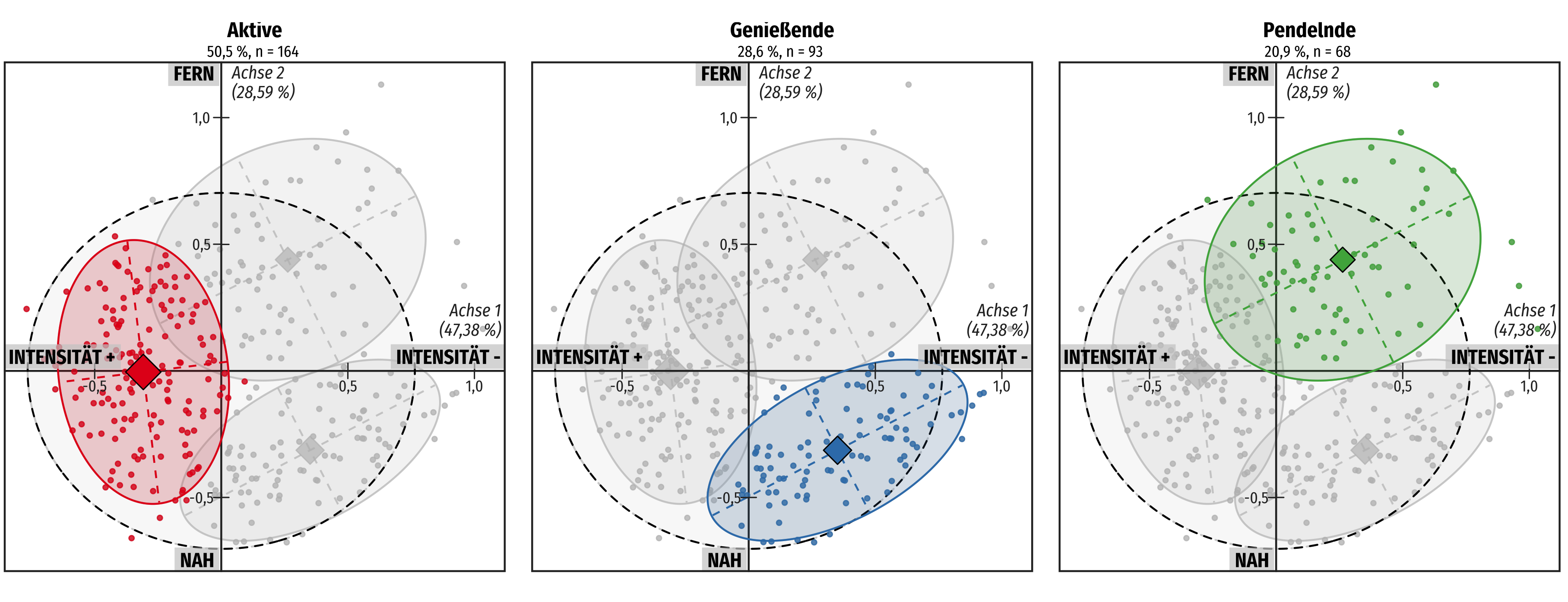
TimeSpaceAnalysis
2015 bis heute • Publikationen: 2
Das R Paket TimeSpaceAnalysis implementiert eine Vielzahl von Techniken aus der Geometrischen Datenanalyse, vor allem Verfahren rund um die multiple Korrespondenzanalyse. Darüber hinaus bietet es GIS-Funktionen, um sogenannte Orte Chronologien zu erstellen und auszuwerten, und Methoden zur Analyse von Zeitmustern.

Die Visualisierung der Ergebnisse erfolgt in ggplot2. Alle Funktionen sind ausführlich dokumentiert. Das Paket befindet sich aktuell unter aktiver Entwicklung und wurde bisher noch nicht auf CRAN veröffentlicht. Eine Nutzung ist allerdings bereits möglich.
install.packages("remotes")
remotes::install_gitlab("inventionate/TimeSpaceAnalysis")
Info: TimeSpaceAnalysis nutzt zur Auswertung von Daten vor allem Funktionen der Pakete factoextra, FactoMineR (beiden Paketen wurden im Zuge der TimeSpaceAnalysis-Entwicklung weitere Funktionen hinzugefügt) und kml / kml3d.
Publikationen
2019 • gemeinsam mit Kenneth Horvath artikel
Exploring the Complex Social Spaces of Higher Education
On the Uses and Challenges of Geometric Data Analysis and Topological Approaches
In: Theory and Method in Higher Education Research. Bd. 4
In this paper, we propose a specific mixed-methods approach for exploring the field of higher education that starts from the concept of social space (Lefebvre 1992; Bourdieu 1995). The notion of social space offers a useful heuristic for a number of problems relevant to higher education research: it shifts our attention to systems of relations between social actors (spatialization), to how these relations become stabilized in and through social and cultural practices, and to the processes of subjectification and positioning linked to these sets of relations. Correspondingly, it has been used rather widely, especially in studies that draw on Bourdieusian relational sociology of education (e.g. Börjesson et al. 2016, Lebaron & Le Roux 2015, Larsen & Beech 2014, Grenfell & Lebaron 2014).
2017 • gemeinsam mit Daniela Kutzner artikel • peer-review
Die Konstruktion des Raums der Interessenslagen potenzieller Studierender in der Frühpädagogik
In: die hochschullehre. Jg. 3|2017